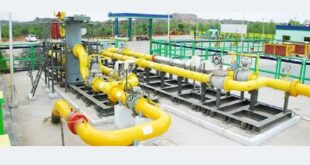- Recently, Global Multidimensional Poverty Index 2021 was released by the United Nations Development Programme (UNDP) and the Oxford Poverty & Human Development Initiative (OPHI).
- The Index considers data from 109 countries and 5.9 billion people.
Highlights of the report:
- 3 billion people are multidimensionally poor.
- About half (644 million) are children under age 18.
- Nearly 85% live in Sub-Saharan Africa (556 million) or South Asia (532 million).
- More than 67% live in middle-income countries.
Important points:
- Of the 80 countries and five billion people for which there is data over time, 70 reduced MPI in at least one period, with the fastest changes coming from Sierra Leone (2013-2017), followed by Togo (2013/2014-2017).
- Some countries saw the fastest absolute reductions in their poorest regions-helping to fulfil their pledge to leave no one behind.
- These areas include North Central in Liberia (2013–2019/2020) and Province 2 in Nepal (2016–2019).
- In some cases, disparities in multidimensional poverty across ethnic and racial groups are greater than disparities across geographical subnational regions.
- Within a country, multidimensional poverty among different ethnic groups can vary immensely.
- Therefore different policy actions are needed to reduce multidimensional poverty.
- Worldwide about two-thirds of multidimensionally poor people (836 million) live in households where no woman or girl completed at least six years of schooling.
- 227 million live in India.
- One-sixth of all multidimensionally poor people (215 million) live in households in which at least one boy or man has completed six or more years of schooling but no girl or woman has.
- The report also finds that women and girls living in multidimensional poverty are at higher risk of intimate partner violence.
- 1 billion are exposed to solid cooking fuels, another billion live with inadequate sanitation and another billion have substandard housing.
- 788 million live in a household with at least one undernourished person.
- 568 million lack improved drinking water within a 30-minute round trip walk.
Way forward:
- A person is multidimensionally poor if she/he is deprived in one third or more (means 33% or more) of the weighted indicators (out of the ten indicators). Those who are deprived in one half or more of the weighted indicators are considered living in extreme multidimensional poverty.
- MPI is significant as it recognizes poverty from different dimensions compared to the conventional methodology that measures poverty only from the income or monetary terms.
SOURCE: THE HINDU,THE ECONOMIC TIMES,MINT
 Chinmaya IAS Academy – Current Affairs Chinmaya IAS Academy – Current Affairs
Chinmaya IAS Academy – Current Affairs Chinmaya IAS Academy – Current Affairs



